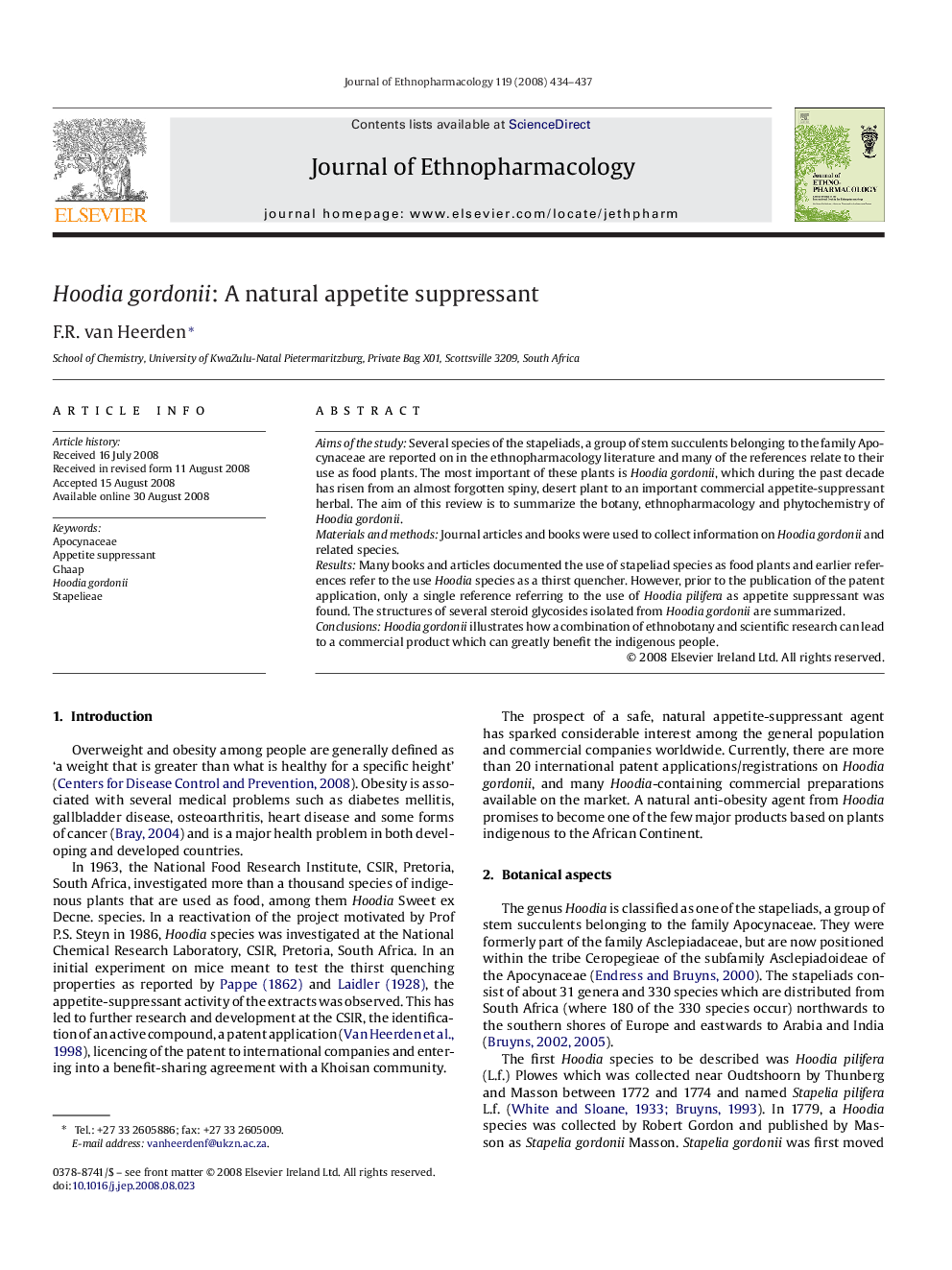| Article ID | Journal | Published Year | Pages | File Type |
|---|---|---|---|---|
| 2547609 | Journal of Ethnopharmacology | 2008 | 4 Pages |
Aims of the studySeveral species of the stapeliads, a group of stem succulents belonging to the family Apocynaceae are reported on in the ethnopharmacology literature and many of the references relate to their use as food plants. The most important of these plants is Hoodia gordonii, which during the past decade has risen from an almost forgotten spiny, desert plant to an important commercial appetite-suppressant herbal. The aim of this review is to summarize the botany, ethnopharmacology and phytochemistry of Hoodia gordonii.Materials and methodsJournal articles and books were used to collect information on Hoodia gordonii and related species.ResultsMany books and articles documented the use of stapeliad species as food plants and earlier references refer to the use Hoodia species as a thirst quencher. However, prior to the publication of the patent application, only a single reference referring to the use of Hoodia pilifera as appetite suppressant was found. The structures of several steroid glycosides isolated from Hoodia gordonii are summarized.ConclusionsHoodia gordonii illustrates how a combination of ethnobotany and scientific research can lead to a commercial product which can greatly benefit the indigenous people.
